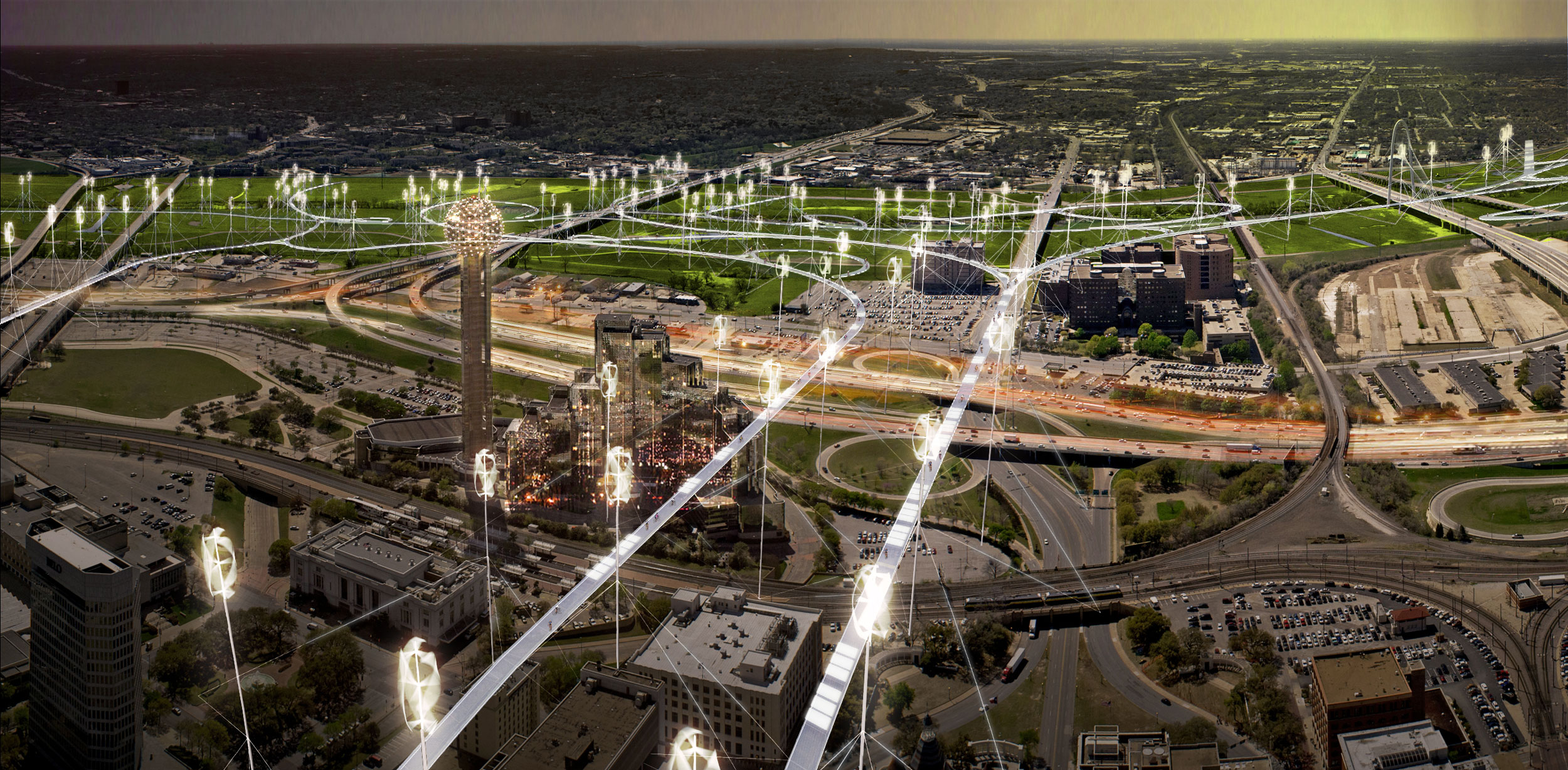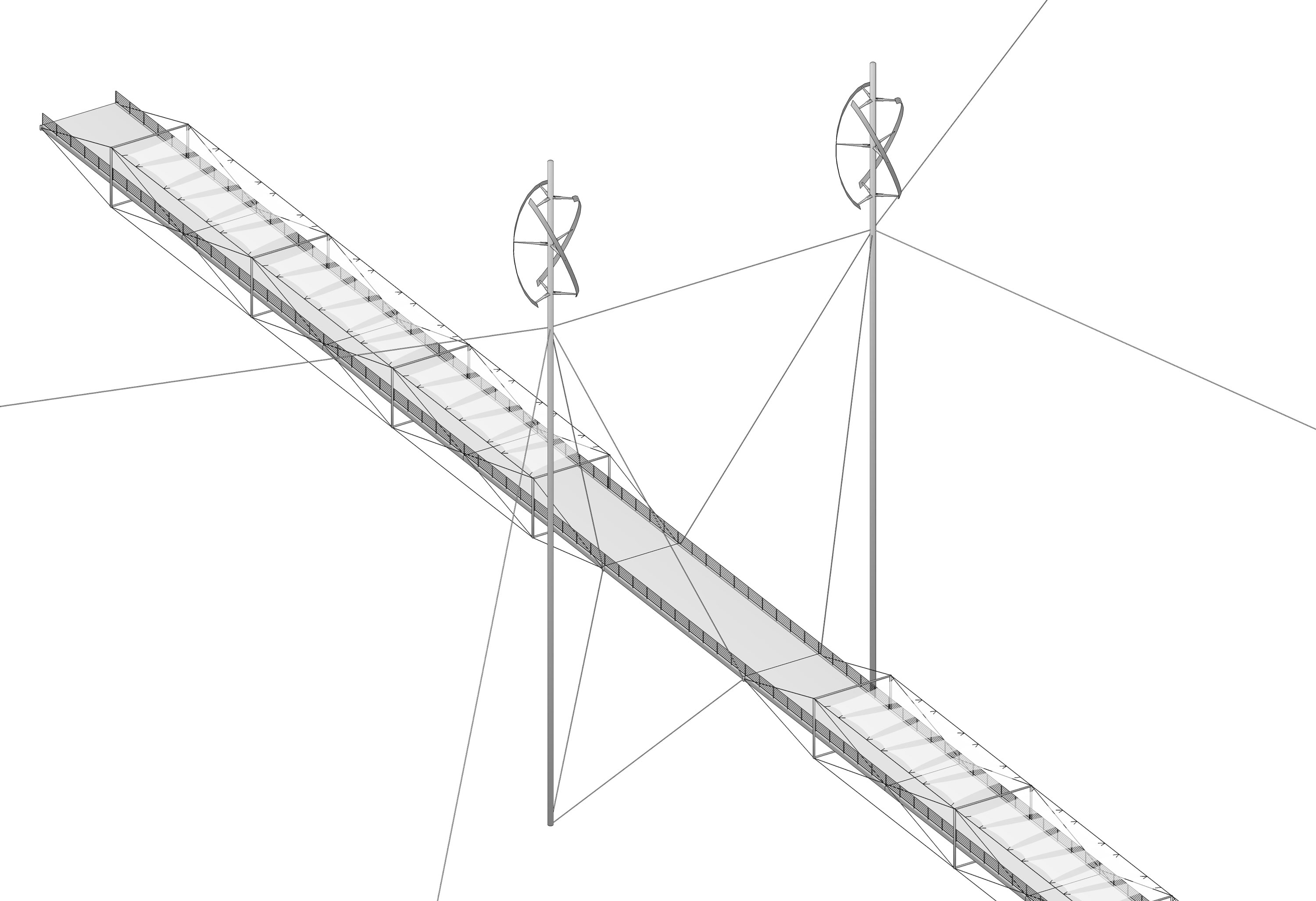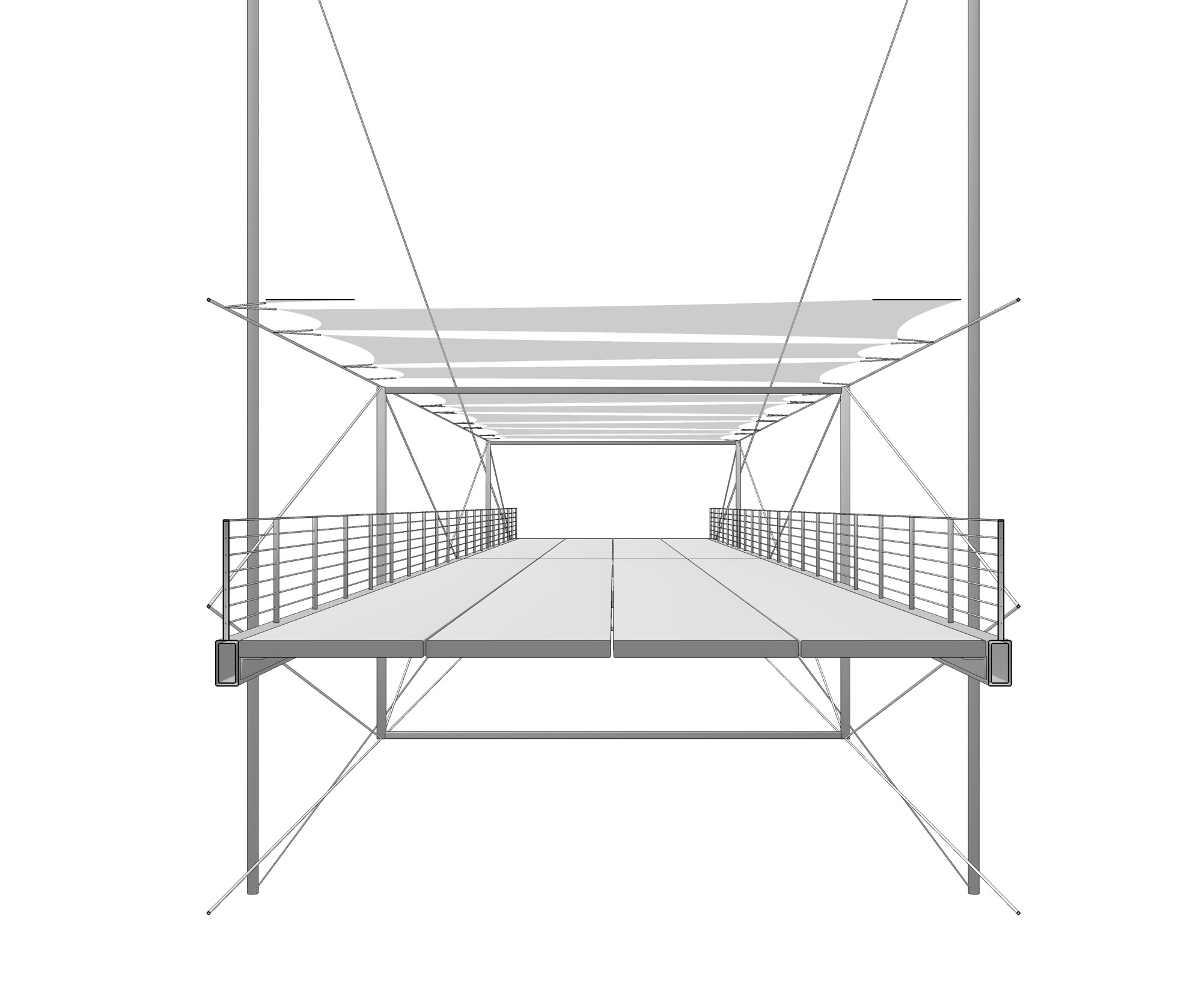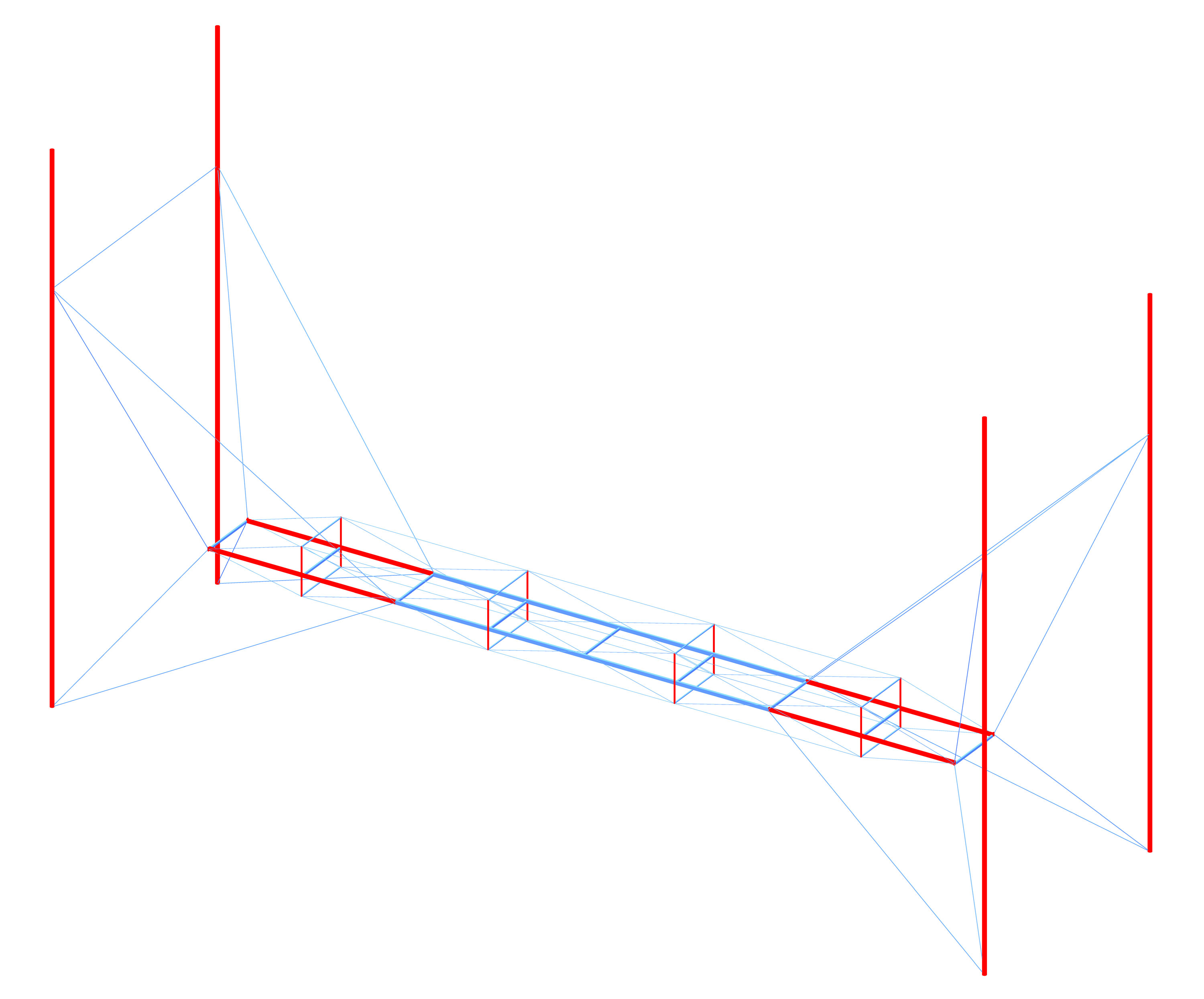

URBAN ORNAMENTS - WHEELS IN THE SKY:
A Smart Platform for Non-motorized Travel over Existing Urban Conditions
New non-motorized mobility infrastructure is proposed to be overlaid on existing urban conditions as ornaments. The overlaid infrastructure as a whole becomes a city-scale iconography. It’s parts work as functional ornaments. The structure (and ornament) provides shaded bike path connecting the isolated riverfront to city downtown and commuter town over the river; it also serves as a platform for wind turbines. Wheels of both bikes and turbines in the sky play urban ornaments with many benefits in economy, health, environments, disaster control, and city aesthetics.
We selected Dallas in the US as a tested to apply our innovative ideas. Dallas is highly auto-dependent and has many challenges in urban conditions. Currently, the Trinity levee –fixed, heavy, single-purpose infrastructure—divides the city’s life space into three isolated parts: Downtown (work), open space in floodway (play), and residential neighborhoods (live). Our proposal recovers the seamless connection with providing non-motorized travel pathways over the isolated spaces. The pathways (elevated 6-9 ft over ground) freely connect 5 LRT stations, Trinity and Trinity Levee trails, 4 activity centers in floodway, Continental Avenue Pedestrian Bridge, and 6 residential neighborhood centers. The pathways, totaling 11 miles long, are consisted of about 1,000 60-feet-long modular decks, supported by a fully adaptable and decentralized structure network of compression masts and tension cables. The modular structure system enables economic pre-fabrication, flexible partial changes, and resiliency to damages.
The pathway system links bike networks between employment centers in Downtown and residential areas across the river, which would critically promote utilitarian as well as recreational biking in City of Dallas where commuting mode share for biking is 0.1% in 2009, which was only less than 10% of the average of large cities with 1M+ population size in the US. The pathways are also integrated with LRT stations to lower the city’s auto-dependency. We expect bike commuting increased to 6% by the proposal (Portland’s bike commuting modal share is 6% in 2009).
The proposal minimally touches the open space with the elevated and decentralized structure. It opens the flexibility of future developments and the resilience to potential flood threats.




The proposal expects short auto trips in Downtown replaced by bike trips. When the bike commuting reaches to a practically reasonable level of 6% (equivalent to Portland’s in 2009), total vehicle-mile-traveled 3,404,061 miles and 1,440 tons of vehicle-related CO2 emission per year could be reduced. Each wind turbine integrated with the support pole is expected to generate 400 watt based (10-feet-diameter rotor with average wind speed of 10 mph in Dallas) which sufficiently support the new non-motorized travel system.



The proposal promotes urban lifestyle benefiting local economy of Dallas. Also, assuming 6% of total Dallas commuters shifting from driving to biking, reduced congestion costs estimate can go up to $6.8 M per year. Lastly, the proposal provides multiple safe paths between residential neighborhoods and the downtown. Individual’s everyday bike use (30 min/day) is estimated to save health care at $544 per year, $16.3M per year in total in the city.

Team: UB+DIOINNO
Jin Young Song
Bumjoon Kang
Dohwan Kong
Junghoon Ko
Byungki Kim